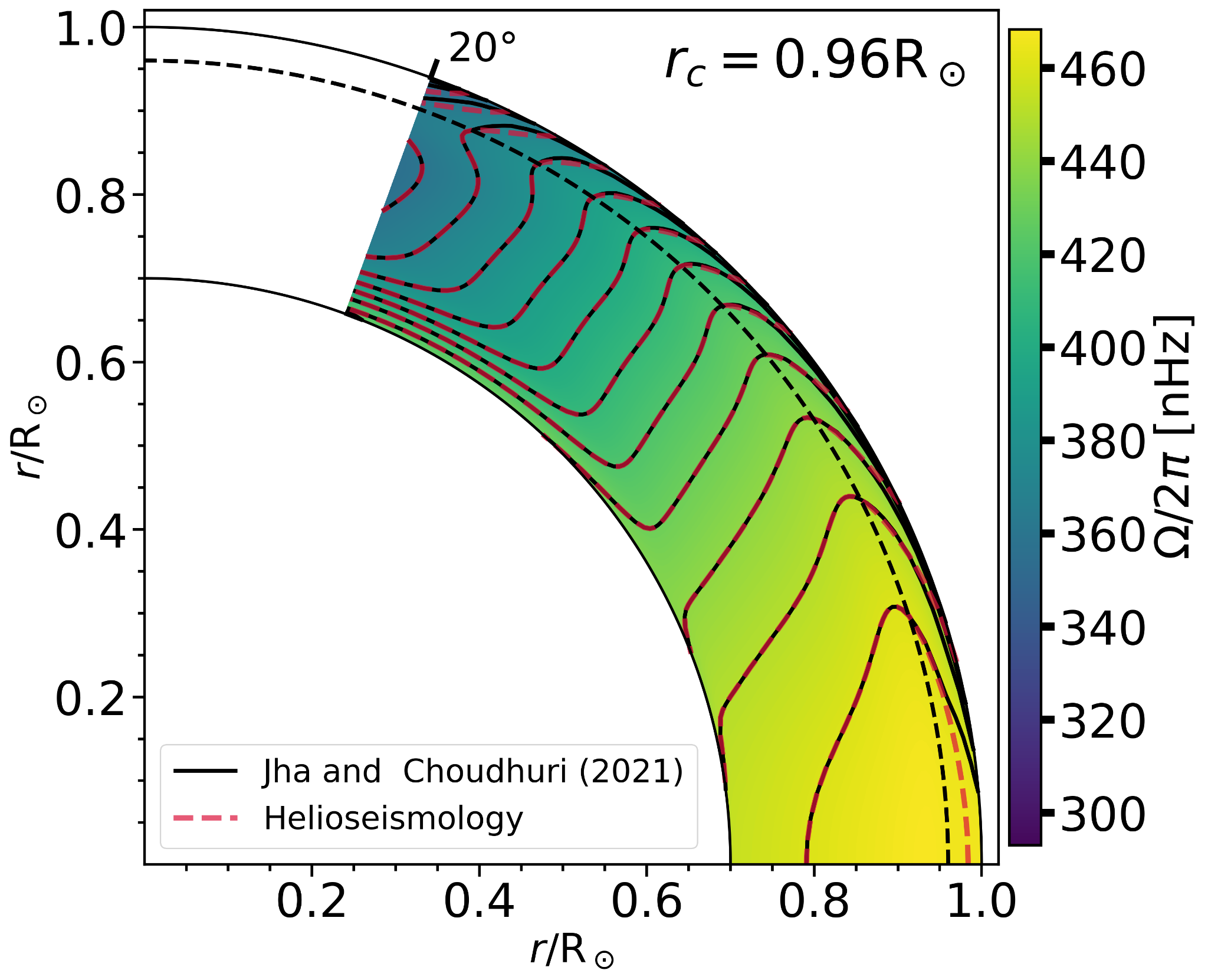The First Theoretical Model of the Near-Surface Shear Layer of the Sun
The Sun, our life-giving star, has always been a star of many interests. Its importance for the living beings made many astronomers turn their telescope towards the Sun just after the advent of the telescope by Galileo Galilei. The early and regular observations of the Sun revealed the presence of dark spots, now known as sunspots, and 11 years of periodic variation in their number of appearances, popularly known as the solar cycle. The systematic observations of sunspots also show that the solar surface rotates differentially, which means the equator of the Sun spins faster than its pole. However, the internal rotation of the Sun has only been revealed after the helioseismology (technique of using sound waves to peek inside the Sun) era. Helioseismology has answered the many puzzling questions about the Sun while raising many questions about our nearest star at the same time. One of the crucial observations that helioseismology has made was the existence of the near-surface shear layer (NSSL). The NSSL is the region very close to the visible solar surface, where there is a change in the rotation profile of the Sun. The understanding of NSSL is crucial for the Sun, but it will also help us understand the other stars. The presence of such a layer had been indicated by many researchers in the past based on solar surface observations but the real inference has been provided only after helioseismic measurements.
A researcher, Bibhuti Kumar Jha, from Aryabhatta Research Institute of Observational Sciences (ARIES), an autonomous institute under the Department of Science and Technology, Govt. of India, along with the senior scientist, Prof. Arnab Rai Choudhuri, from the Indian Institute of Science, Bangalore, has for the first time given the theoretical explanation of the existence of NSSL in the Sun. This work has been published in the journal Monthly Notices of the Royal Astronomical Society.

Figure: The solar rotation profile calculated based on the theoretical model given by Jha and Choudhuri (2021). The solid black and dashed red contours are the contours of constant angular rotation based on the model and observation respectively.
In their study, they have used the thermal wind balance equation which actually tells about how the slight difference in temperature between solar poles and equator, which is called thermal wind term, is balanced by the centrifugal force appearing due to solar differential rotation. Most scientists believe that this condition is true only in the interior of the Sun and it does not hold near the solar surface. In this work, the authors have shown that this belief actually holds near the surface as well. They have noted that if this condition is true near the solar surface it can explain the existence of NSSL which is inferred in helioseismology based observation.
Publication link:
ArXiv: https://arxiv.org/abs/2105.14266
DOI: https://doi.org/10.1093/mnras/stab1717
For more details, Bibhuti Kumar Jha (bibhuti[at]aries[dot]res[dot]in) and Arnab Rai Choudhuri (arnab[at]iisc[dot]ac[dot]in) can be contacted.

